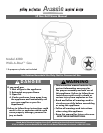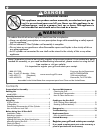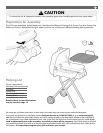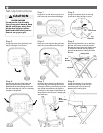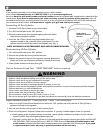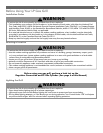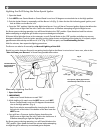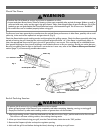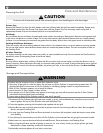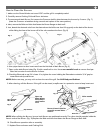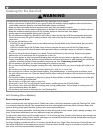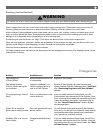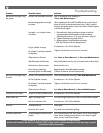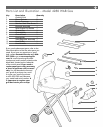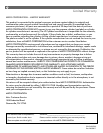Special offers from our partners!

Find Replacement BBQ Parts for 20,308 Models. Repair your BBQ today.

9
Check The Flame
To reduce the risk of death or serious injury from an explosion or a fire:
• Inspect and clean Burner/Venturi Tubes for insects or insect nests, especially after periods of storage. Spiders or small in-
sects can build nests, webs, and lay eggs in the grill’s Venturi Tubes, obstructing the flow of gas to the Burner. (Fig. 6)The
backed-up gas can ignite behind the Control Panel and cause a fire beneath the grill. This is known as a “flashback.”
• Be sure Burners are re-installed properly before using grill.
WARNING
!
Yellow Tip
Primarily Blue Flame
1/4” tall flame minimum
Fig. 5
Burner
Venturi TubeValve
Control
Knob
Spider webs or nest
inside Venturi Tube
Fig. 6
End of Cooking Session
To reduce risk of serious injury or death from fire or burn hazard:
• Allow grill and grease in the Grease Cup to completely cool before emptying, cleaning, moving, or storing grill.
• Empty the Grease Cup after each cooking session so grease does not accumulate.
WARNING
!
1. After each cooking session, close the Hood and turn the Burners to the “High” position and burn for five minutes.
This will burn off some cooking residue, thus making cleaning easier.
2. When you have finished using your grill, turn the Control Knobs clockwise to the “Off” position.
3. Remove the Propane cylinder and cap the regulator opening.
4. Wait until the grill is cool before closing the Hood, cleaning, or putting on a grill cover.
The Burners have been preset by the manufacturer for optimal flame performance. A blue flame, possibly with a small
yellow tip, is the result of the optimal air and gas mixture. (Fig. 5)
Check the flame before each cooking session and throughout the grilling season. Check the flame especially after long
periods of storing the grill. Note that the minimum flame height should be 1/4”. If the flame is significantly yellow in
color, the appropriate amount of LP gas in the air/LP gas mixture is not correct. This could be due to a blocked Burner
from grease drippings or from insects building a nest inside the Burner or Burner opening. Should you notice that your
Burner(s) are getting hard to light or the flame is not as hot as it once was, refer to the “How to Clean your Burners”
section (page 11) to remove any possible obstructions.



